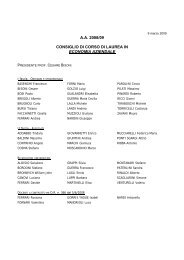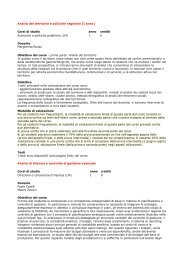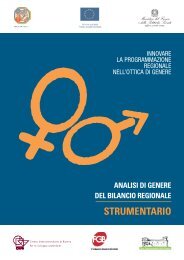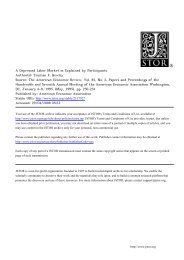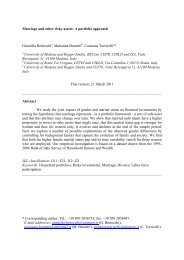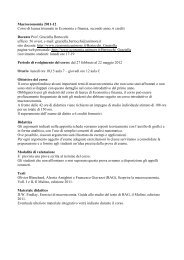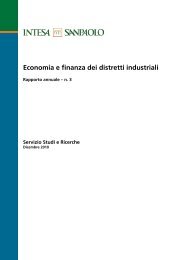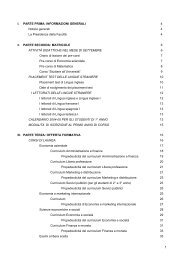same time keeping their prices low. To achieve this, however, it is important todisseminate mark<strong>et</strong>ing knowledge among Chinese business people, through theintroduction of speci<strong>al</strong>ized mark<strong>et</strong>ing courses in academic business curricula, theorganization of executive training courses, seminars and workshops on mark<strong>et</strong>ingissues, and the provision of free hands-on mark<strong>et</strong>ing consulting services to firms thatintend to sell their products abroad.Corporate policy-makers should <strong>al</strong>so re<strong>al</strong>ize that brand image has a more significanteffect on consumer ev<strong>al</strong>uations than the image of their country, industry, or product.As such, they should invest time, money, and effort in building a strong brand imag<strong>et</strong>hat will make their goods attractive to overseas consumers. US managers should takeadvantage of the favorable ev<strong>al</strong>uations their country received from British consumersby trying to develop their brands in a way that will enhance their positive image evenfurther. Importantly, they should fully deliver to consumers whatever is promised intheir promotion<strong>al</strong> and advertising campaigns, in order to avoid disappointment anddissatisfaction with the actu<strong>al</strong> products sold, and a resulting drop in consumerev<strong>al</strong>uation. Individu<strong>al</strong> firms could position their products <strong>al</strong>ong the lines of theproduct/mark<strong>et</strong>ing attributes that consumers consider favorable for US goods (e.g.qu<strong>al</strong>ity, service, warranty), and present convincing arguments that will subsequentlyconvert them into repeat buyers. As opposed to that of US firms, the situation of theirChinese counterparts in the British mark<strong>et</strong> is not so optimistic, as demonstrated by themoderate to low ev<strong>al</strong>uations received on <strong>al</strong>most <strong>al</strong>l non-price factors. Thus, it isimportant for them to make every possible effort to improve their brand image, in orderto overcome the relatively unfavorable image observed at the country, industry, andproduct level. This can be achieved by b<strong>et</strong>ter understanding consumer needs andwants, manufacturing innovative and qu<strong>al</strong>ity goods, offering proper service, andproviding effective distribution and promotion, while at the same time maintainingprices at comp<strong>et</strong>itive levels.US versusChinese goods813Limitations and future researchThe previous conclusions and implications should be seen within the context of anumber of limitations, that provide the basis for undertaking future research on thesubject. First, this study was conducted among British consumers, whose idiosyncraticev<strong>al</strong>uation patterns may be different from those residing in other countries. Thus, toestablish the stability of the study findings, it is important to replicate this study indifferent socio-economic contexts (e.g. developing countries) and geographic regions(e.g. Asian countries). Second, the focus of this study was on goods manufactured inthe US versus goods produced in China only. There is scope for expanding thisresearch to a wider range of developed (e.g. Canada) and developing (e.g. India)countries, as well as including in the investigation newly industri<strong>al</strong>ized countries (e.g.South Korea). Third, the same argument applies to the selection of products. Use ofdifferent industries, products, brands, and models may provide addition<strong>al</strong> insights intocountry-of-origin ev<strong>al</strong>uations and help to make more illuminating inferences about theway consumers’ attitudes toward foreign products and attributes are formulated.Fourth, the study excluded goods produced by indigenous manufacturers, <strong>al</strong>thoughincluding them could provide addition<strong>al</strong> information as to the way consumers ev<strong>al</strong>uatedomestic goods vis-à-vis their foreign counterparts on different levels of an<strong>al</strong>ysis. Fifth,the study captured the ev<strong>al</strong>uations of consumers at a single point in time, which was
<strong>EJM</strong>41,7/8814based on their previous experiences, associations, and memories. However, theseev<strong>al</strong>uations are not static, but change over time, as a result of influences by mediareports on foreign developments, person<strong>al</strong> visits to foreign countries, export promotioncampaigns, and so on, stressing the need to investigate the longitudin<strong>al</strong> stability (orinstability) of these ev<strong>al</strong>uations. Fin<strong>al</strong>ly, nowadays an increasing number of firmsemploy multi-country input in the manufacture, design, and assembly of a singleproduct, thus necessitating the execution of studies addressing this trend. It would beuseful, for example, to examine the separate effects of a product’s country ofmanufacture, design, or assembly on consumers’ ev<strong>al</strong>uations based on the multi-leveland multi-cue approach adopted in this study.Notes1. The first study on country-of-origin effects was conducted by Schooler (1965) and since thenmore than 200 articles have been published. These were thoroughly reviewed at times invarious semin<strong>al</strong> articles by Bilkey and Nes (1982), P<strong>et</strong>erson and Jolibert (1995), Al-Sulaiti andBaker (1998), and Verlegh and Steenkamp (1999).2. Despite their importance, country-of-origin effects have often been neglected by managersfor two major reasons: they are closely related to cultur<strong>al</strong> issues, which are not usu<strong>al</strong>ly easyto address due to inadequate manageri<strong>al</strong> training and appreciation; and in practice, they aredifficult to identify and translate into effective mark<strong>et</strong>ing and communication strategies(Parameswaran and Pisharodi, 1994).3. Some gener<strong>al</strong> criticisms made of research on the subject refer to the atheor<strong>et</strong>ic nature, limitedscientific rigor, and oversimplification of the investigation approach (Bilkey and Nes, 1982;Samiee, 1994; Nebenzah <strong>et</strong> <strong>al</strong>., 1977).4. Although there have been many attempts in the past to compare and contrast consumerperceptions of products originating from different countries, a comparison b<strong>et</strong>ween US andChina has only been tangenti<strong>al</strong>ly tackled. To some extent this can be attributed to the factthat China has only recently emerged as a driving force in world export trade, fiercelycomp<strong>et</strong>ing against tradition<strong>al</strong> major actors (such as the US) to increase its share ininternation<strong>al</strong> mark<strong>et</strong>s (The Economist, 2005).5. Although the findings of this study might run the risk of becoming outdated, as a result ofpotenti<strong>al</strong> changes in consumers’ ev<strong>al</strong>uations, they can still be useful because of: pinpointingthat the various product cues can have a different impact on consumers’ ev<strong>al</strong>uations;demonstrating how differently consumers can ev<strong>al</strong>uate foreign goods, especi<strong>al</strong>ly when theseare examined from different levels of an<strong>al</strong>ysis; and assisting policy-makers to identifycertain aspects of their mark<strong>et</strong>ing offerings, that are lagging behind their internation<strong>al</strong>comp<strong>et</strong>itors.6. This occurs because consumers recode and abstract individu<strong>al</strong> elements of information inhigher order units (c<strong>al</strong>led “chunks”), which usu<strong>al</strong>ly evolve around brand name (Simon, 1970;Jacoby <strong>et</strong> <strong>al</strong>., 1971).7. This sample size is much higher than the average of that used in previous studies on thesubject (which is around 300 individu<strong>al</strong>s) (Al-Sulaiti and Baker, 1998). The adequacy of thesample employed can <strong>al</strong>so be justified by the fact that, while the majority of the extantresearch on country-of-origin ev<strong>al</strong>uations relied on mail or drop-in questionnaires, this studycollected its data through person<strong>al</strong> interviews that are more costly and difficult toadminister.8. Whirpool is a major US-based manufacturer that entered the European mark<strong>et</strong> afteracquiring Philips’ major home appliance line of business in the 1980s, and it currently has
- Page 1: The current issue and full text arc
- Page 5 and 6: EJM41,7/8790Table I.Authors Study o
- Page 7: EJM41,7/8792Table I.Authors Study o
- Page 10 and 11: in overseas markets, and the adjust
- Page 12: 2002a, b). Products made in countri
- Page 15 and 16: EJM41,7/8800may also create positiv
- Page 17 and 18: EJM41,7/8802Sample profileIn terms
- Page 19 and 20: EJM41,7/8804Table III.Literature so
- Page 21 and 22: EJM41,7/8806Table IV.Confirmatory f
- Page 23 and 24: EJM41,7/8808Table VI.A comparison o
- Page 25 and 26: EJM41,7/8810Table VII.A multi-level
- Page 27: EJM41,7/8812situation, it is not su
- Page 31 and 32: EJM41,7/8816Bannister, J.P. and Sau
- Page 33 and 34: EJM41,7/8818Kaynak, E. and Kara, A.
- Page 35: EJM41,7/8820Tse, D.K. and Gorn, G.J




